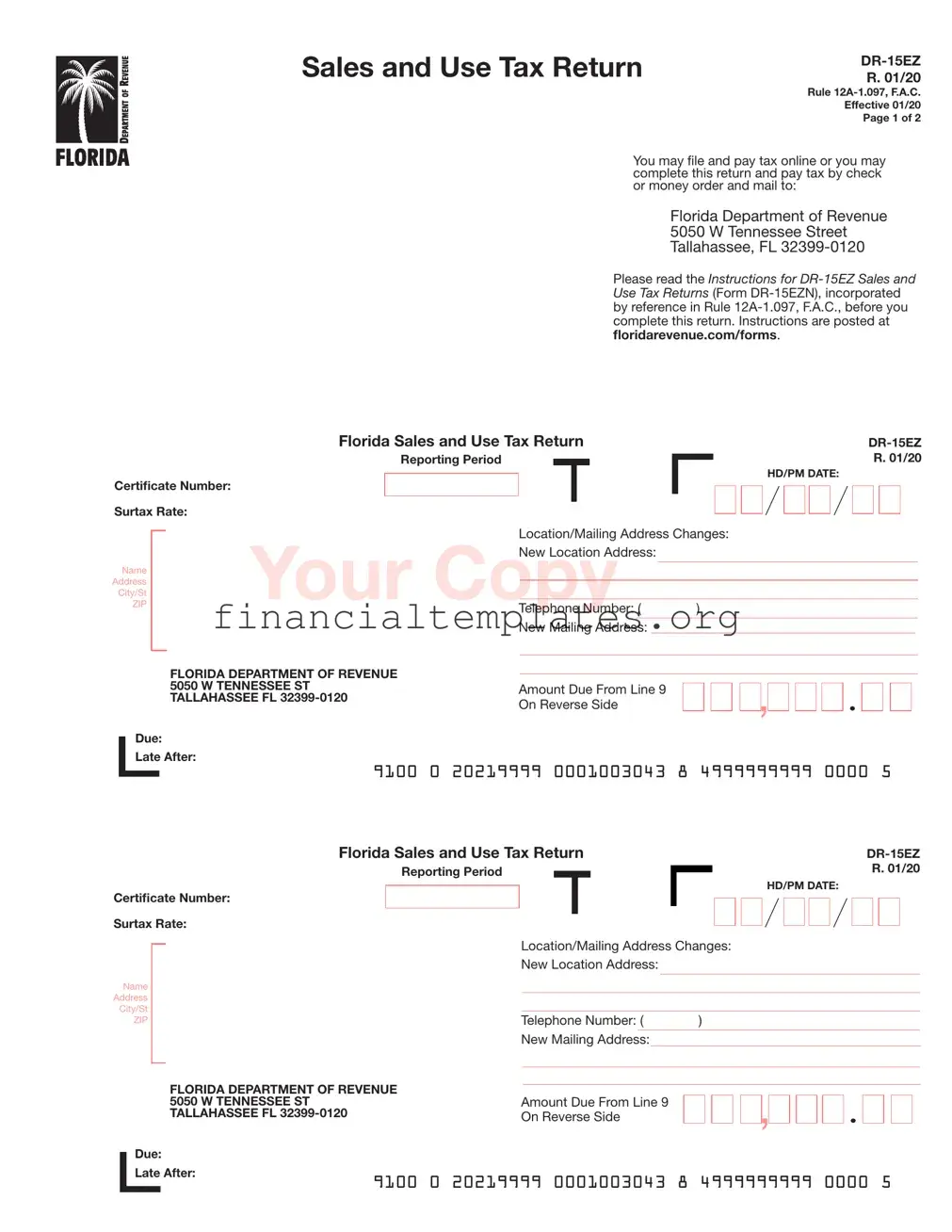The Form W-2, Wage and Tax Statement, bears similarity to the DR-15EZ form as both are required for tax reporting purposes. The W-2 form, used by employers to report wages paid and taxes withheld to their employees, overlaps in function with the DR-15EZ by necessitating accurate financial reporting to a governing tax authority. While the DR-15EZ details sales and use tax collected by businesses, the W-2 focuses on income tax, yet both play crucial roles in ensuring tax compliance.
Form 1040, the U.S. Individual Income Tax Return, also shares commonalities with the DR-15EZ form. Both documents are pivotal for tax reporting, albeit for different subjects; the 1040 for individual income taxes and the DR-15EZ for sales and use taxes by businesses. Each form requires detailed financial information to accurately calculate taxes due, underscoring their importance in the tax administration process.
The DR-15EZ's counterpart in the realm of corporate taxation is Form 1120, the U.S. Corporation Income Tax Return. This form is essential for corporations to report their income, gains, losses, deductions, and calculate their federal income tax liability. Like the DR-15EZ, which companies use to declare sales and use tax, Form 1120 is critical for corporate entities to fulfill their tax obligations.
Form 1099-NEC, Nonemployee Compensation, parallels the DR-15EZ through its role in the tax reporting ecosystem, specifically for independent contractors and freelancers. It documents income from non-employment-related services. Both forms facilitate compliance with tax laws, albeit targeting different types of income: the DR-15EZ for sales and the 1099-NEC for services rendered.
Another document, the State Unemployment Tax Act (SUTA) filings, intersects with the DR-15EZ's domain in the landscape of tax documentation. SUTA filings, required by state governments, involve reporting wages paid to employees for unemployment insurance purposes. Similarly, the DR-15EZ involves reporting sales-related figures but aimed at complying with sales and use tax laws at the state level.
The Quarterly Federal Excise Tax Return, Form 720, shares the periodic tax reporting feature with the DR-15EZ. While Form 720 addresses the federal excise taxes on specific goods, services, and activities, the DR-15EZ focuses on state-level sales and use taxes. Both necessitate businesses to regularly report and remit taxes, showcasing their parallel functions in the tax compliance framework.
Form 940, the Employer’s Annual Federal Unemployment (FUTA) Tax Return, mirrors the DR-15EZ by requiring annual submissions to federal agencies. Form 940 calculates and reports unemployment taxes due by employers, akin to DR-15EZ's reporting of sales and use taxes. These documents ensure businesses contribute appropriately to government funds, be it for unemployment or taxation purposes.
The Business Property Tax Return, used in various localities to assess property tax on business assets, aligns with the DR-15EZ in its focus on business-related contributions to public coffers. While the DR-15EZ captures sales and use tax information, the Property Tax Return tallies taxable property to calculate due taxes, both pivotal for fiscal responsibility in commerce.
The Alcohol and Tobacco Tax and Trade Bureau (TTB) F 5000.24, Excise Tax Return, like the DR-15EZ, is specialized for a particular sector, documenting excise taxes on alcohol, tobacco, firearms, and ammunition. Its function of tax collection and compliance echoes the DR-15EZ's role in tracking sales and use taxes, illustrating the diverse landscapes of taxation across industries.
Lastly, the Use Tax Return forms utilized by individuals or businesses for declaring use tax on out-of-state purchases resemble the DR-15EZ in their aim to ensure tax compliance on transactions. Whereas the DR-15EZ concerns businesses selling goods and services, Use Tax Returns target consumers, highlighting the broad scope of tax obligations spanning both sellers and buyers in the economic ecosystem.






 ,
,






